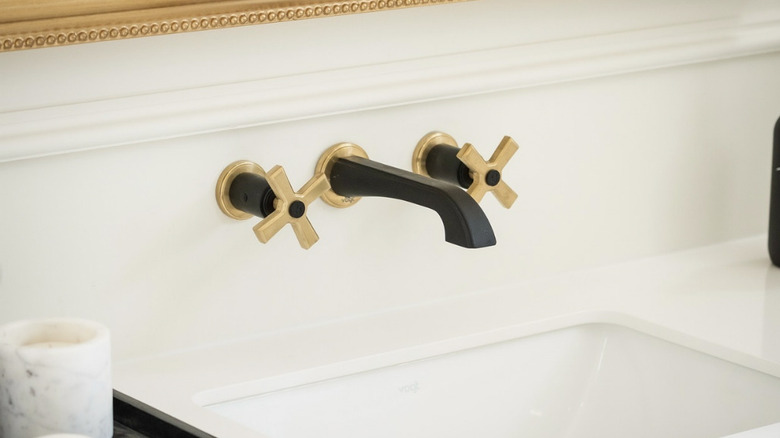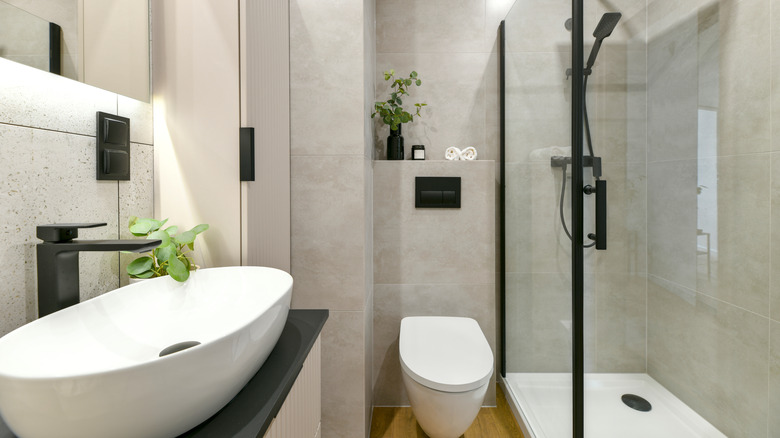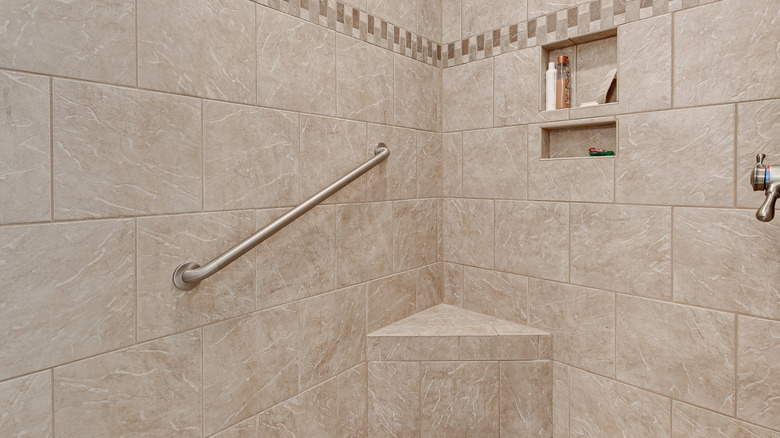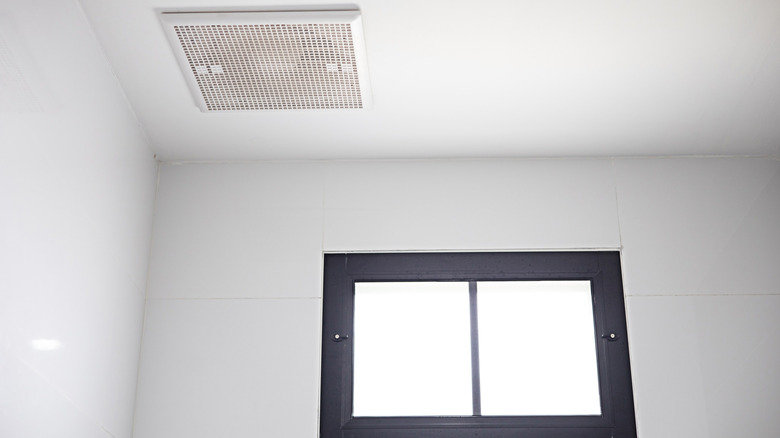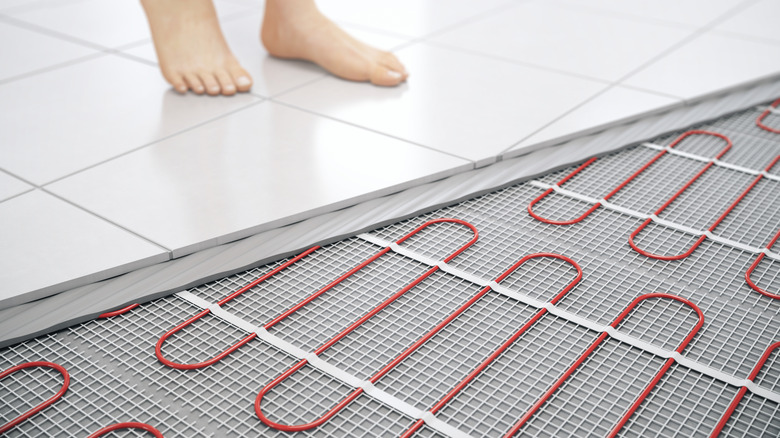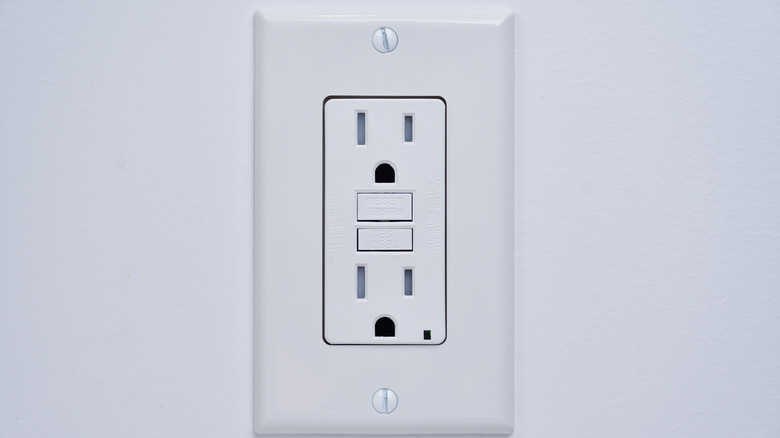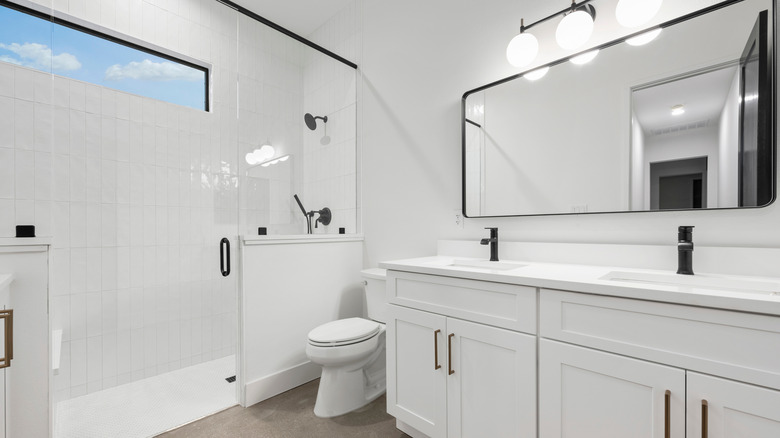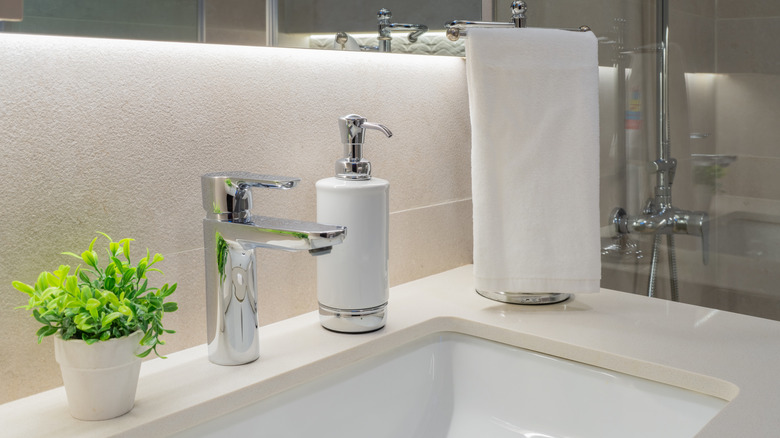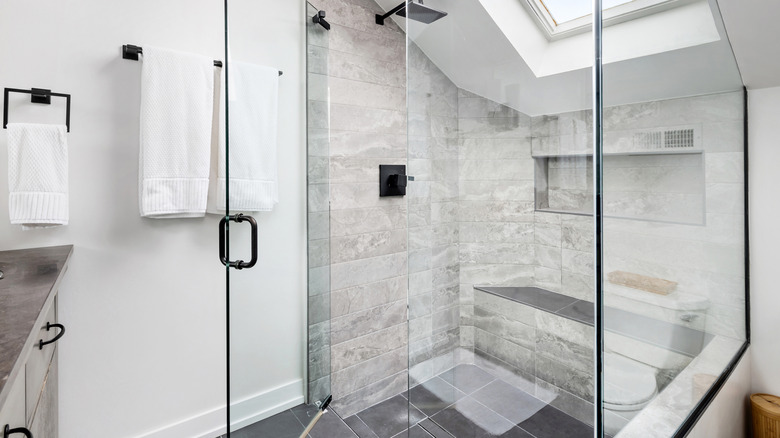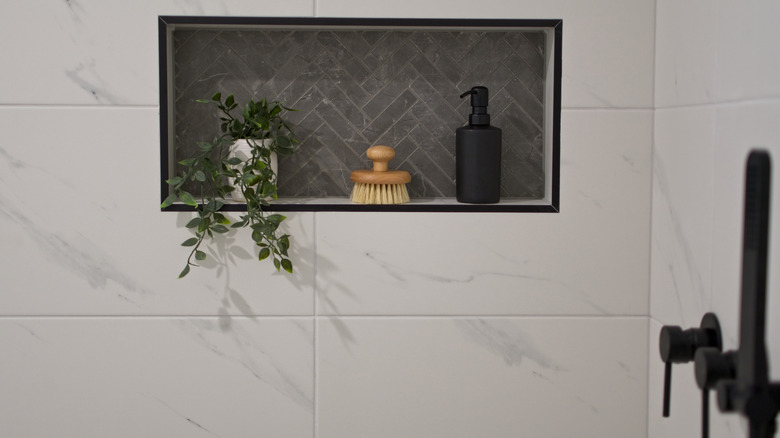Mike Holmes' Favorite Bathroom Remodel Features He Thinks Are Worth Installing
We may receive a commission on purchases made from links.
Choosing which features to include when remodeling a bathroom doesn't have to be hard if you listen to Mike Holmes. When it comes to home improvement, few names carry as much weight in the industry as his does. With decades of experience in construction and renovation, the Canadian contractor, HGTV host, and professional handyman has built a reputation for doing things the right way the first time around — with no shortcuts and no compromises.
As bathrooms are one of the most used spaces in any home, remodeling them can be exciting and overwhelming at the same time. Yet, Holmes knows exactly what upgrades are worth your time and money — from layout and storage solutions to ventilation options and timeless design elements, and everything in between. Whether you're dreaming of a spa-like retreat, need practical updates for a busy family bathroom, or want to boost your home's resale value, you'll find ideas to match your budget and personal taste. Plus, these features tend to work for all levels of DIY expertise. Regardless of if you're rolling up your sleeves or hiring a pro, these are Holmes' favorite bathroom remodel features he thinks are worth installing.
A wall-mounted faucet adds more dimension to a space
Counterspace can be at a premium in a small bathroom, so a great way around this is by moving your faucet to the wall to make a bit more room. "Check out our stunning bathroom fixtures (from @vogtindustries )," Holmes wrote in an Instagram post. "We went with a wall-mounted faucet. Love the finish, the matte black looks so elegant."
The reason behind a swap like this is simple: The sleeker and more functional your faucet is, the better your bathroom looks. "In bathrooms, traditional widespread faucets with hot and cold handles that sit on either side of the spout tend to take up more room," Holmes shared with Kraus. By moving things to the wall, you instantly have more space for soap, toothbrushes, and the like. However, if you don't have the space for a wall-mounted faucet, or just don't like how it looks, you can still keep things on the counter — just lose the handles. "On the other hand, center sets take up less space as the water lines and handle are integrated into the spout," Holmes continued. "This is an ideal option for bathrooms that is both convenient and practical."
Swapping the bathtub for a shower in small spaces
If you don't have much space in your bathroom, Holmes is a big fan of getting rid of your bathtub in favor of having a more accessible shower, instead. "Consider eliminating your bathtub and replacing it with a glass shower," he wrote for his website, Make It Right. "It will create the illusion of extra space."
However, no matter how small your bathroom is, Holmes does have a small caveat for this update, keeping potential resale value in mind. "The general rule is if your home only has one bathroom, then you should keep your tub," he wrote. "It's great for relaxing or if you have kids or pets at home. If you have the luxury of two full baths, then you have the option to eliminate one of the tubs." The deciding factor for which bathroom keeps the tub and which doesn't should be space. In the smaller bathroom, you'll likely need the square footage for something else.
Add grab bars to future-proof your bathroom
When you spend all the money to remodel your bathroom, you aren't just making it nicer for your current self. In your forever home, you're improving it for the version of you 10-15 years down the line, as well. Because of this, Holmes is a big fan of making the space more accessible for your older self, since you're already tearing things up anyway. "If you are renovating your bathroom, I'd like you to think about your future and potential mobility issues and consider including grab bars," he wrote for his website, Make It Right.
One of the easiest ways to do this is by picking out shower bars. "Grab bars are a safety feature that helps a person stay balanced, and support part of their weight while moving, or have something to hang onto in case they trip or fall," he wrote. Yet, they aren't just for your sake, as they are also great for those who might be there to take care of you, too. "They can also help carers move a loved one from one location to another," he continued. For the bars to work as intended, they have to be mounted to the wall studs. This way they can withstand lots of weight. The two most practical places to have them are in the shower to help with balance, and near the toilet to assist with standing and sitting. Even if you don't complete a full-scale bathroom upgrade, installing grab bars is one of the best ways to make your home more accessible without renovating.
An extractor fan can make all the difference
Opening a window while you shower can help air things out, but sometimes that's not always practical — like when it's raining, freezing, or you have nosy neighbors. Because of this, Holmes thinks an extractor fan is a great feature to install if you are remodeling. "Exhaust fans are an essential component in any bathroom or kitchen renovation because it reduces condensation and moisture by exhausting the moist air to the outside," he wrote for Kraus. "The average shower produces an enormous amount of water vapor and steam. If that warm, wet air isn't properly vented, it will find its way into your walls and ceilings and cause a lot of problems, such as mold and rot."
There are a few dos and don'ts for installing an extractor fan. "Ideally, you want the fan as high up as you can get it, since warm, moist air is pushed up," he wrote for Canadian Living. For this reason, Holmes recommends placing the machine on the ceiling. However, when picking out the fan, be sure it has the power needed to effectively clear the air from the space safely outdoors. If it's not strong enough, or the air is vented wrong, disaster can strike. "I've seen the rot that happens when people take shortcuts and discharge the air into a crawl space or the attic or between walls," he continued. "You'll have a much more serious mold problem in a very short time."
Heated floors can make things toasty
If you live somewhere that gets really cold, Holmes believes heated tiling in the bathroom is the perfect way to treat yourself. "I think heated floors are a great addition to any bathroom renovation. They can provide continuous warmth and comfort to the space," he shared on his website, Make It Right. And this isn't the only reason, as he adds that as you grow older, you are likely to be more susceptible to the cold. Even in milder climates, the warmth underfoot can make a huge difference to your daily comfort.
While there are plenty of tiling options to choose from, Holmes has two favorites that he recommends. "The best flooring option for in-floor heating is typically porcelain or ceramic tile," he wrote. "These tiles are durable, have excellent heat conductivity, and stay warm longer offering better energy efficiency than other materials." Yet before you install the heating under the tile, he offered a quick caveat to his Instagram followers about the order of installation. "Some homeowners and contractors think you can lay your new tile directly over your existing tile to save some time," he said. "Why do I hate this? Well, for one thing, you're just asking for your new tile and grout to crack — so that brand new floor isn't going to keep its look for very long." Remember, you always have to pull up the old tile before installing the new — this is one of the major flooring mistakes Mike Holmes wants you to avoid at all costs.
Ground Fault Circuit Interrupters (GFCIs) will keep your bathroom safe
Because the bathroom is a "wet" space that also has electrical outlets, it's also a room that's ripe for disaster. Because of this, there are many rules about where you can place outlets in relation to faucets, etc. Plus, Holmes adds that adding just one more safety feature during your bathroom remodel can go a long way. "The National Electric Code (NEC) requires the installation of GFCI outlets in new construction in areas where electrical outlets are close to water," he wrote on Make It Right. Holmes shares that the feature wasn't made a requirement until the 1980s, and older homes still aren't required to install them unless you are completely rewiring the house. However, he thinks each house should have one. There are no exceptions when it comes to safety, as going above and beyond the basic building code is one of his best tips for a seamless home renovation.
While it is possible to install a GFCI receptacle yourself, because it requires working with wiring, you should only attempt this if you have prior electric experience or are a veteran DIYer. If not, it's best to hire someone for the task, as it can easily become unsafe if installed incorrectly. Risks include shocking yourself or starting an electrical fire, so be sure to proceed with caution, as ignoring safety is one of the top renovation blunders you should always avoid.
A window can go a long way for ventilation, too
Sometimes you don't have the budget or space for an extractor fan — Holmes recognizes this. What he won't stand for, however, is a bathroom that doesn't even have a window. "I love that a window can be installed right in the shower space," he said in a video on Facebook. "That means you can open it up, shower — and all that moisture will go out the window. Especially if you open the door to your bathroom about an inch. It creates that cycle out."
Yet, unlike most other windows, you can't use wood trim when installing a window in your shower. This is because it needs to be watertight and wood just isn't capable of that. "That's a no-no," Holmes continued in the video. "You want to tile that whole wall and you wanna use a tile jam around the window. And usually a full jam, not tile pieces." Just like for the flooring in the bathroom, Holmes has favorite types of tile for the shower walls and window: ceramic or porcelain. The bigger pieces the better, to avoid water getting into the wrong spots.
Matching finishes are important
You likely think of bathroom remodels as massive overhauls that cost thousands of dollars and involve knocking down walls, but Holmes has always been one to pay attention to the smallest of details, too. If you want to make a positive change in just one afternoon, you can ensure the finishes in your space are matching. "Do you want your bathroom or kitchen to look like a hardware store? My general rule for finishes is don't use more than two kinds of metal," he wrote for Kraus. "For a cohesive look, always use the same finish for most fixtures like faucets and cabinetry hardware."
There are heaps of other finishes in the bathroom, too — as Holmes points out the towel bar, towel rings, and robe hooks are also in the mix. While copper, brass, and even black matte are popular choices for these details, Holmes recommends chrome as a good starting point, because of its flexibility. "Chrome finishes are the easiest to match up with other finishes," he wrote. "But one thing to watch out for is that they tend to show water and soap marks." Another option that keeps away blemishes is stainless steel, if doing less maintenance is something that is important to you.
Shower benches make everyday living a luxury
When remodeling your shower, Holmes thinks that adding a built-in bench can make your bathroom feel more like a luxury spa. "Having a bench in your walk-in shower means you can sit comfortably and wash without trying to balance," he wrote on Make It Right. "A shower bench provides a place for your foot to rest while shaving, exfoliating, and foot scrubs. The extra surface can also be used to store additional toiletries and sponges." This ease of use can elevate your daily shower into something much more exciting.
Yet, this everyday luxury isn't the only reason shower benches are so essential. "This is especially important for people with mobility issues or injuries," he said. "It's also a good idea if you're renovating your bathroom and intend to make this your forever home." As you age, you might find that you need to sit while showering. You might even have a surgery that requires you to temporarily rest while cleaning yourself, too. Having a bench ahead of time takes the pressure off when you need it, as you've already planned ahead.
If you don't want to install a permanent seat, you have plenty of options for temporary measures as well. For example, the Drive Medical Shower Chair is sturdy and inexpensive, if a bit sterile, while the Bambüsi Bamboo Shower Bench comes in three different wooden fishes with a storage shelf built-in.
A shower niche is great for storage
While it's always possible to add a shower caddy and other storage solutions to your space, if you are remodeling your bathroom anyway, Holmes thinks it's a great idea to add an in-built niche or two. "One can never have too many shower niches, especially in a small bathroom. It's a great way to stay organized," Holmes shared in a Facebook post. A shower niche is a recessed shelf built into the wall of a shower or tub. Stylish and functional, these niches eliminate the need for clunky caddies or soap dishes — so your shower always feels clutter-free. You can place them at about elbow height for easy access or, if you often shave your legs, you should also consider one a few inches above the floor to rest your foot in while shaving. It makes things a lot easier.
While niches can be custom-built, Holmes thinks that prefabricated ones are often easier to install and use. In a Facebook video, he recommends one from Schluter-Systems, as it even comes with space for recessed lighting to further set the mood. Using a prefabricated niche shrinks the overall margin of error, as you don't have to worry about cutting tile to fit into the space you've left for the niche. Instead, you can simply measure around the prefabricated dimensions and slot it into place.

